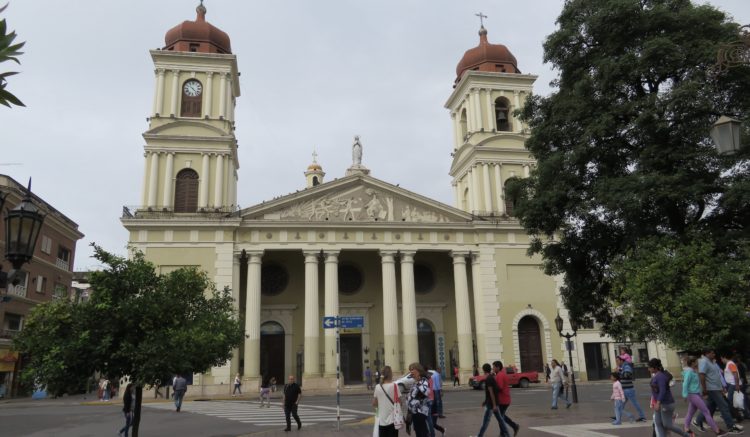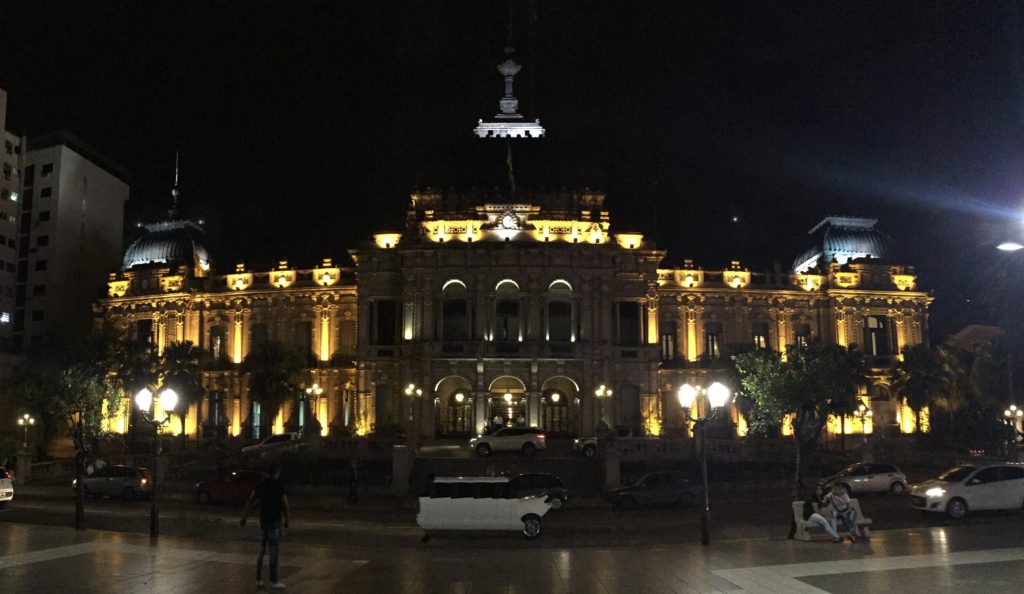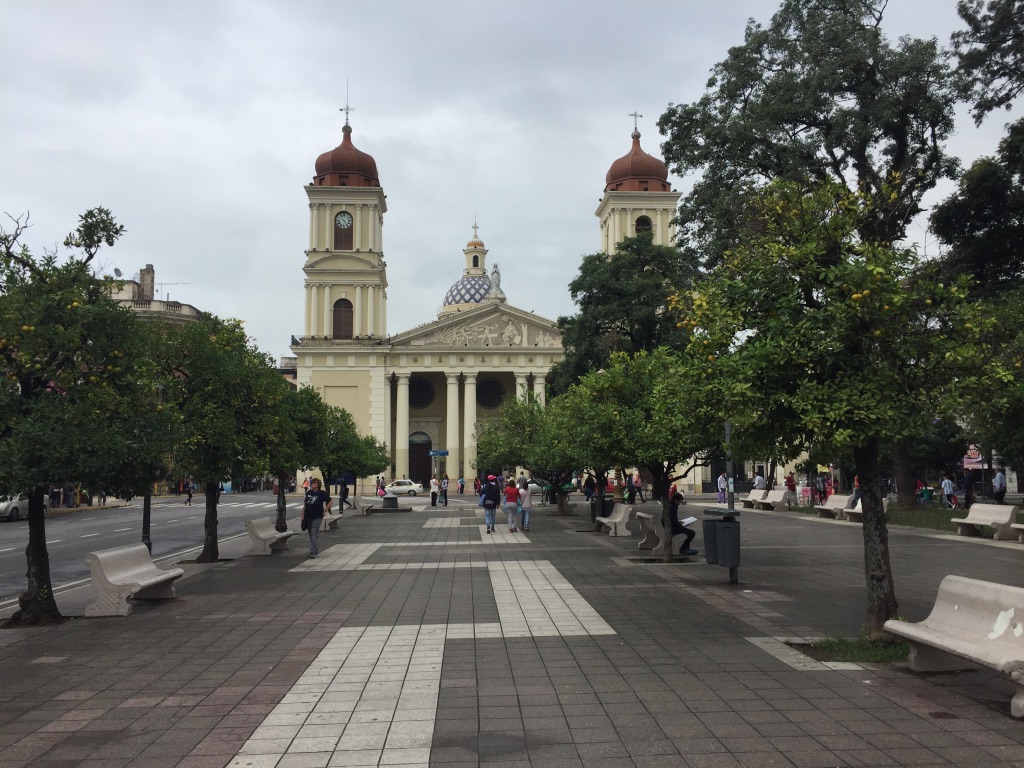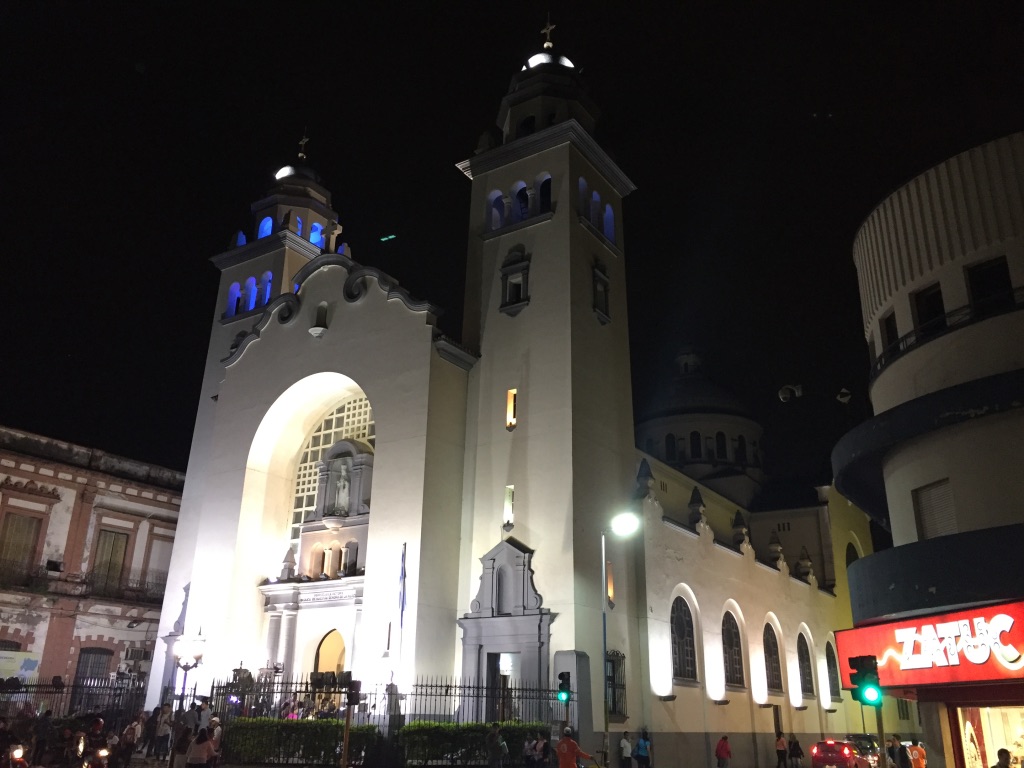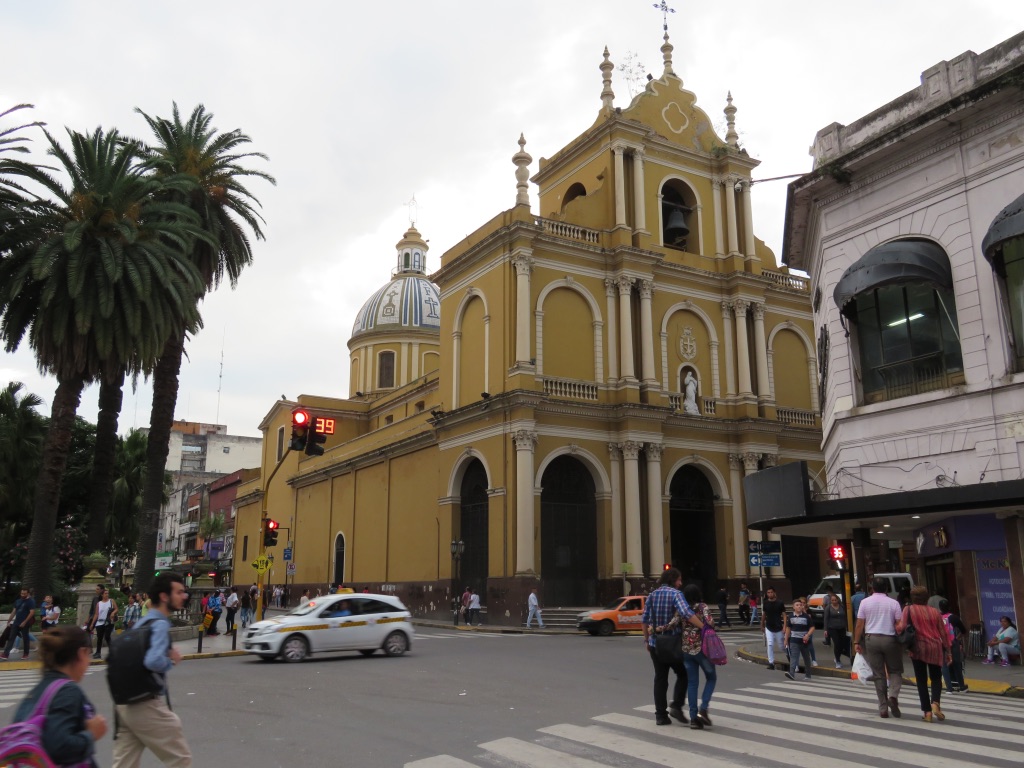Our journey north continued by public bus the 702kms to San Miguel de Tucumán, the historical city where, on 9th July 1816, Argentina officially declared its independence from Spain. Today, Tucumán is the most important commercial centre in north-west Argentina, boasting a dynamic economy and a rich cultural heritage. We stayed at the Swiss Hotel Metropol close the main Plaza Independencia.
Geography and Climate
San Miguel de Tucumán, often simply referred to as Tucumán, lies in the foothills of the Aconquija Mountains, at the transition between the subtropical lowlands of the Gran Chaco and the higher, temperate Andean valleys. Known as the “Garden of the Republic” (El Jardín de la República), Tucumán is blessed with fertile land due to its proximity to rivers and its subtropical climate, which supports an abundance of plant life. The climate is warm and humid, with hot summers and mild winters, but temperatures can drop in the higher mountainous areas nearby. Seasonal rains are common, particularly in the summer months, which help irrigate the rich farmlands surrounding the city.
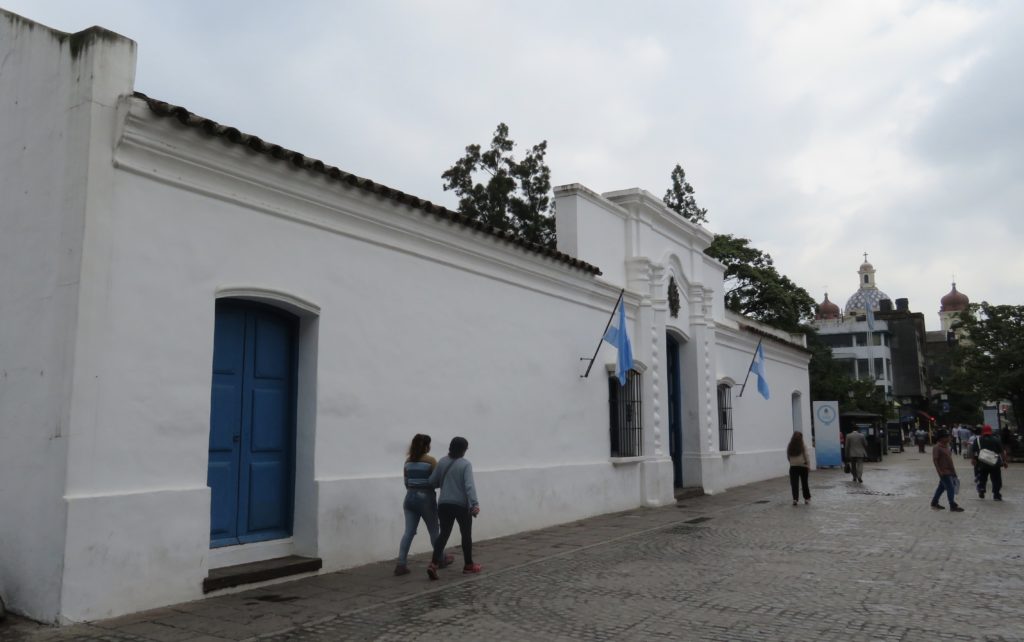
History
Tucumán has long been at the centre of Argentina’s historical narrative. It was founded in 1565 by Spanish conquistador Diego de Villarroel as a strategic settlement between the Viceroyalty of Peru and the River Plate region. During the early colonial period, Tucumán was an important regional outpost, but its most significant moment came during the Argentine War of Independence. In 1816, the Congress of Tucumán convened here, and it was within the walls of the Casa Histórica that the representatives of the United Provinces of South America formally declared Argentina’s independence from Spanish rule.
Economy and Local Products
Historically, Tucumán was a centre of sugar production, which brought significant wealth to the region during the 19th century. British investment played a key role in the development of the sugar industry, and many of the plantations and refineries were built with British capital. However, the decline of sugar production in the 20th century forced Tucumán to diversify its economy. The city is now the heart of Argentina’s citrus industry, particularly known for its lemons, which are exported globally. Tucumán is the world’s largest exporter of lemons, and it plays a crucial role in the global supply chain, providing ingredients to major companies like Coca-Cola.
The presence of citrus groves, especially lemon orchards, adds to the region’s distinct landscape, and walking through the streets of San Miguel de Tucumán during harvest season is a sensory experience, with the citrus-scented air filling the city.
Tucumán has also maintained its British influence in unexpected ways, most notably in its reputation as the rugby capital of Argentina. The sport was introduced by British settlers and has since flourished in the region, with numerous local rugby clubs producing talented players.
Principal Sites
San Miguel de Tucumán’s cultural vibrancy is reflected in its rich colonial architecture, historical landmarks, and lively public spaces. Plaza Independencia, the city’s main square, is a bustling centre of activity, lined with towering orange trees that fill the air with a refreshing citrus aroma during harvest season. The square is surrounded by some of the city’s most important buildings, including the Basilica of San Francisco, one of the oldest Franciscan monasteries in Argentina, standing proudly on the corner opposite the main cathedral.
The Cathedral of San Miguel de Tucumán
The Catedral de Nuestra Señora de la Encarnación, located on the north side of Plaza Independencia, is the city’s most iconic religious structure. Originally built in the late 17th century, it has undergone various renovations, giving it a unique blend of colonial and neo-classical architecture. The cathedral’s exterior is characterised by its cream-coloured façade and twin towers, which have been beautifully restored, while the interior boasts intricately carved altars and religious artwork.
Casa Histórica de la Independencia
Just one block from the main square is the Casa Histórica de la Independencia, perhaps the most important site in the city. This white-walled colonial house is where Argentina’s independence was declared in 1816. Today, it serves as a museum, offering visitors a glimpse into the historical events that shaped the nation. The house features traditional colonial architecture, with charming courtyards and gardens, preserving the sense of history from over 200 years ago. Exhibits inside the museum include artefacts from the period and displays that narrate the country’s journey to independence.
Basilica de la Merced
The Basilica de la Merced is another significant religious landmark in Tucumán. This basilica played a key role during Argentina’s fight for independence, as it was where General Manuel Belgrano offered thanks after his army’s victory at the Battle of Tucumán in 1812. The church is a beautiful example of neo-classical architecture, with its grand columns, ornate façade, and historical significance, making it a must-visit for history enthusiasts.
Economy, Shops, and Daily Life
Tucumán’s economy, though centred on agriculture, especially citrus farming, has seen diversification in recent decades. Walking through the city, one can see the mix of the old and new. The local economy has been shaped by Argentina’s turbulent financial history and import restrictions have resulted in a flourishing of independent businesses. Tucumán is home to a variety of locally owned shops, from traditional bookshops to unique toy stores that seem to have preserved a retro charm. One standout is the Ateneo Grand Splendid, an elegant bookstore reminiscent of a bygone era, offering a vast selection of literature amidst its old-world ambience.
The mix of shops creates a juxtaposition between modernity and tradition. While some storefronts display a tired, old-fashioned charm, others, like minimalist sports stores, represent the gradual shift towards contemporary consumer culture.
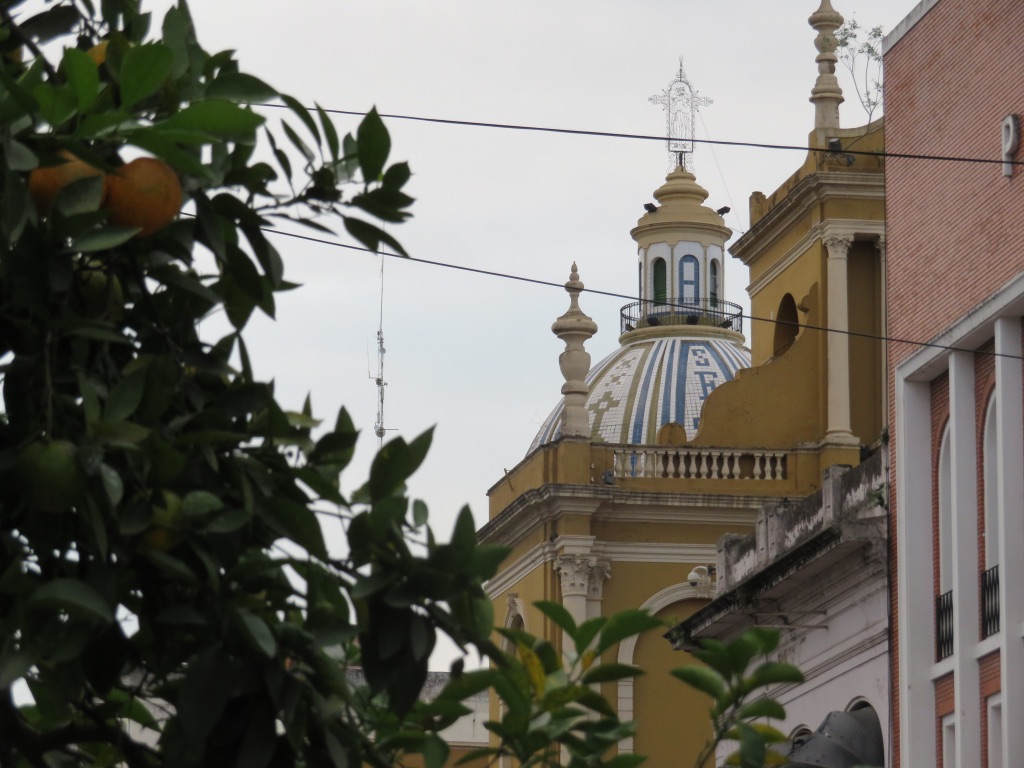

Final Thoughts
San Miguel de Tucumán offers a compelling blend of history, culture, and economic vibrancy. Its streets are filled with reminders of Argentina’s fight for independence, while the surrounding countryside supports a robust agricultural industry that continues to shape the region’s identity. Whether walking through the citrus-scented Plaza Independencia, visiting the Casa Histórica, or exploring the city’s eclectic mix of shops, Tucumán offers a unique perspective on Argentina’s past and present.
Dates: 24/04/2018 to 26/04/2018
